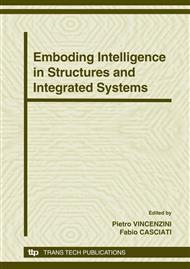p.324
p.334
p.339
p.345
p.355
p.363
p.374
p.380
p.386
Experimental Investigation of Effectiveness of Smart Passive System for Seismic Protection of Building Structures
Abstract:
The newly developed smart passive system is based on a magnetorheological fluid (MR) damper, which is one of the most promising semiacitve control devices, and an electromagnetic induction (EMI) part, which is a power harvesting device from vibration of a structure according to Faraday’s law of electromagnetic induction. Numerical simulations recently conducted by the authors have verified that the smart passive system could be effective to reduce the structural responses in the cases of civil engineering structures such as buildings and bridges. On the other hand, the experimental validation of the system is not sufficiently carried out yet. In this study, therefore, a series of shaking table tests are conducted to experimentally investigate the effectiveness of the smart passive system for seismic protection of building structure. The model structure is a scaled six-story frame structure with the height of 3.5 m and the weight of about 8 ton. The smart passive system is installed between its base floor and the first floor. The responses of the structure are measured under several ground motions including scaled historic earthquake records. The preliminarily experimental results in the smart passive system case are compared with those in the MR damper-based semiactive control cases.
Info:
Periodical:
Pages:
355-362
Citation:
Online since:
September 2008
Authors:
Price:
Сopyright:
© 2008 Trans Tech Publications Ltd. All Rights Reserved
Share:
Citation:


